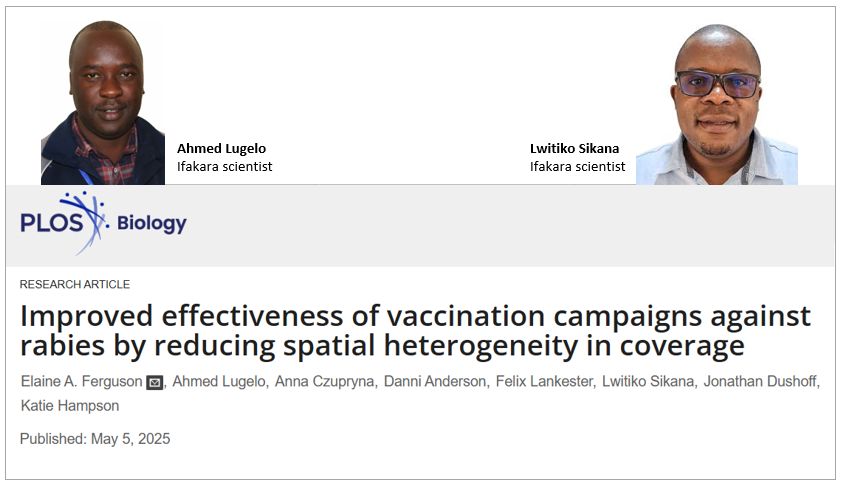
RABIES: Uneven dog vaccination slows down control efforts, new study shows

Despite decades of annual dog vaccination campaigns, rabies continues to persist in parts of Tanzania, and a new study reveals why. Published yesterday in PLOS Biology, the research points to uneven vaccination coverage and regional movement of dogs as key factors causing the disease’s persistence.
Ifakara and international researchers lead the study
The study was led by scientists from the One Health and Veterinary Medicine group at the University of Glasgow’s College of Medical, Veterinary & Life Sciences, in collaboration with Tanzania’s Ifakara Health Institute. Ifakara researchers Ahmed Lugelo, a veterinary researcher, and Lwitiko Sikana, a seasoned research scientist with over a decade of experience tackling public health challenges, particularly rabies, were part of the team.
Two decades of data from Northern Tanzania
The researchers analyzed over 20 years of rabies surveillance and dog vaccination data from the Serengeti district in northern Tanzania, where vaccination efforts have been ongoing since 2003. They examined why rabies continues to persist despite these efforts, focusing on three possible explanations: uneven vaccination coverage, low average vaccination levels, and new infections entering from outside the district.
Uneven coverage weakens campaign effectiveness
They found that uneven vaccination coverage across villages, where some areas are well-covered and others are missed, weakens the overall effectiveness of vaccination programs. This uneven distribution undermines the effectiveness of district-wide campaigns, even when average coverage appears adequate. In contrast, when coverage was more evenly distributed across all villages, rabies cases dropped, with fewer than 0.4 per 1,000 dogs annually and no human deaths reported.
Spread fueled by regional dog movement
The research also showed that rabies outbreaks in one village were often linked to cases in neighboring areas, revealing a high level of connectivity between communities. This regional spread is increasingly driven by incursions from unvaccinated areas outside the district, which in 2022 accounted for up to 50% of reported rabies cases.
“Incursions from unvaccinated areas outside the district are frequent and now represent a major source of residual transmission,” the authors noted. “High epidemiological connectivity within the district, and frequent incursions from outside, interact with heterogeneous vaccination in complex ways that should be considered in program design.”
Call for strategic and coordinated vaccination
These findings underscore the need for more than just high average coverage. The researchers stress the importance of fine-scale monitoring and coordinated regional vaccination strategies to break the cycle of transmission.
Toward achieving the ‘Zero by 30’ goal
“Further knowledge of how incursions, local dog movements, and vaccination efforts interact to drive disease dynamics would also provide valuable guidance to rabies-endemic countries,” the study concludes. “It is now vital that dog vaccination efforts be scaled up to ensure that impacts are sustained, to maximize their benefit to all, and to achieve the ‘Zero by 30’ goal.”
Read the publication here
